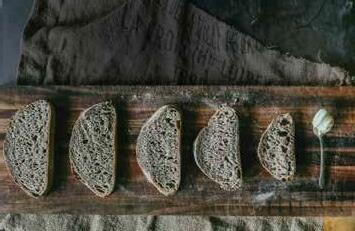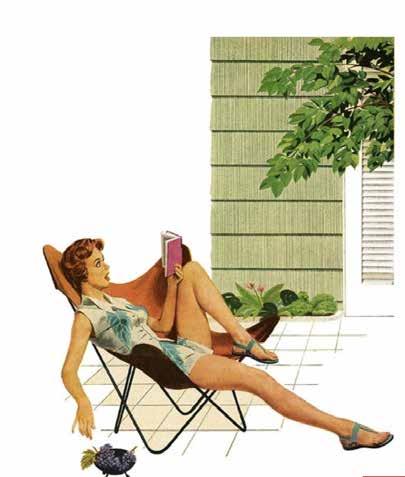
3 minute read
Design with Ann Henderson
Metamorphosis of the Butterfly Chair
This classic design can flitter from apartment seating to museum-quality furniture with ease.
Advertisement
From the early 1940s until current times, the Butterfly Chair has enjoyed a rich history and ubiquitous presence in furniture design. A quick look online will bring almost identical images of Butterfly Chairs ranging in price from $39 to $3,000. Very little has been added or changed over the years, perhaps only reinterpreting the design in nylon and aluminum, thus creating the even more universal folding camp chair seen at every picnic, soccer field or tailgate. The history of the chair tracks art history’s modernism from Paris to Argentina to the United States. Antonio Bonet, Juan Kurchan and Jorge Ferrari Hardoy met while working in the architectural studio of Le Corbusier in Paris. Wanting to bring the modernist doctrine back home, Juan and Jorge enticed Antonio to move to their home city, Buenos Aires, where they founded the architectural studio Grupo Astral. In 1938 the firm worked with Le Corbusier on an apartment building in Buenos Aires. Conceived for this project, the chair was described as “an easy chair for siesta sitting.” The chair was, in fact, an adaptation of the J.B. Fenby folding campaign and camp chair patented in 1881. Fast forward to 1929, when Ludwig Meis Van Der Rohe and Lily Reich unveiled the Barcelona Chair at the German Pavilion for the International Expo of that year. Ergonomic, sculptural, minimalist, this chair also influenced the Grupo Astral designers to deconstruct even further with their Butterfly design. The design was fun, organic, portable, comfortable and impossibly improper. For women, it was an opportunity to demonstrate liberated views as pants were the only comfortable way to navigate getting in and out of the sling. In 1934 the Butterfly chair continued on its seemingly rarefied trajectory when Edgar Kaufman Jr bought three to bring to the United States. One was given to his parents as a housewarming for their new Frank Lloyd Wright home, Falling Water. The other was brought to the Museum of Modern Art where Kaufman was director of industrial design. He described the chair as one of the best efforts of Modern Chair Design. Ironically the creators of the chair received only $11.49 in profit from the entire effort. Knoll picked up production of the chair in the 40s but could not seem to control the desire and ease of the knock-off competition. It was estimated that over 5 million copies of the chair were created in the 50s in the United States alone. After unsuccessfully defending their licensing agreement in a lawsuit in 1948, Knoll decided to give up the fight that seemed inevitable: the public could not get enough of these chairs. The Butterfly chair can still flitter from apartment seating to museum-quality furniture with ease. Done in leather, the original chair is cordoned off in MoMa; done in printed canvas, it is on the floor at Walmart. At less than 24” deep, few chairs offer such comfortable sitting in such a tidy footprint. What chair can pull off an elegant cut velvet with equal aplomb as a quirky, colorful print? Let’s face it: the chair is at home everywhere. As we change to the spring season and venture outside, let’s all have some fun searching for these beautiful butterflies. They will no doubt make us smile and feel like settling in with a good read.

Ann Henderson is the owners of Ann Henderson Interiors. Learn more at artofinside.com. Illustration courtesy Ann Henderson.
Celebrating 20 years of wood-fired breads made with organic flour & grains. Available at stores and farmers’ markets from Peterborough to Brattleboro & beyond.
orchardhillbreadworks.com
The Art of Inside
Integrating shape, scale, color and texture into beautiful interiors.
ANN H E N D ERSON
INT E R I ORS







